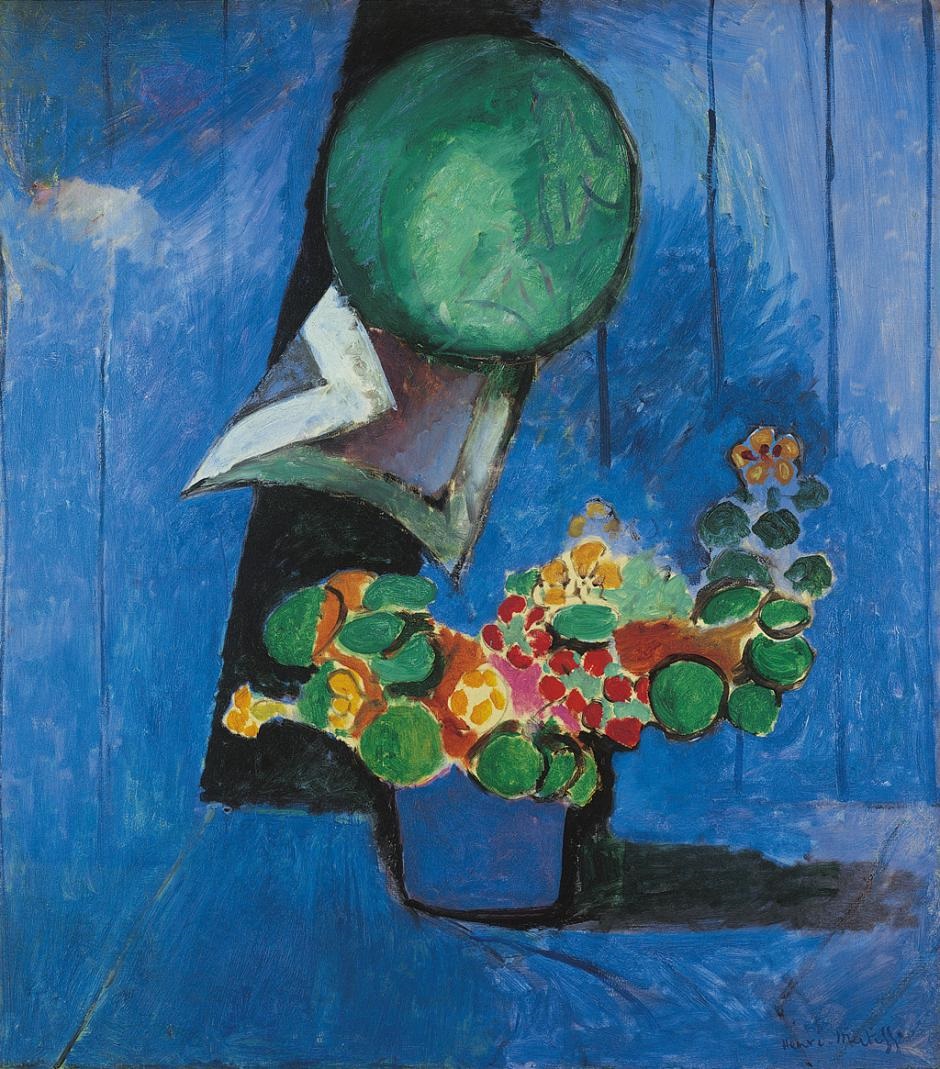art-Matisse.com
Henri Matisse 1869-1954
©Henri Matisse - Flowers and Ceramic Plate 1913
 Flowers and Ceramic Plate |
From the Städel Museum, Frankfurt am Main:
The painting bears the simple title “Flowers and Ceramic Plate” – but it’s not that simple. It is a still life that demands to be viewed in a manner completely different from its classical counterparts. In other words, you have to take a whole new approach – no longer try to contemplate and understand just the objects, but also the colours – the vibrant, deliberately composed chromatic event taking place on the canvas. But what do we mean by that? Matisse had objects from his studio in front of him when he worked on this canvas. A pot of flowers, a painted ceramic plate and a sheet of paper – perhaps a print? – tucked partially behind the plate. These objects have been placed in close proximity to one another, but are viewed from varying perspectives. Whereas we see the flowers and the table they are standing on from the side, we view the plate and the paper from above. That means the end of the spatial illusionism European painters had worked so hard to perfect over many centuries.
Or at least Matisse is playing here with that illusionism. But why? He wanted to emphasise the canvas as the twodimensional surface it is in reality. He arranged colours – for example the nuances of blue – lines and forms in such a way as to create a purely painterly harmony, i.e. a beauty above and beyond the objects which had inspired him to execute the work. This new form of beauty gives preference to the surface over spatial depth and was highly controversial at the time.